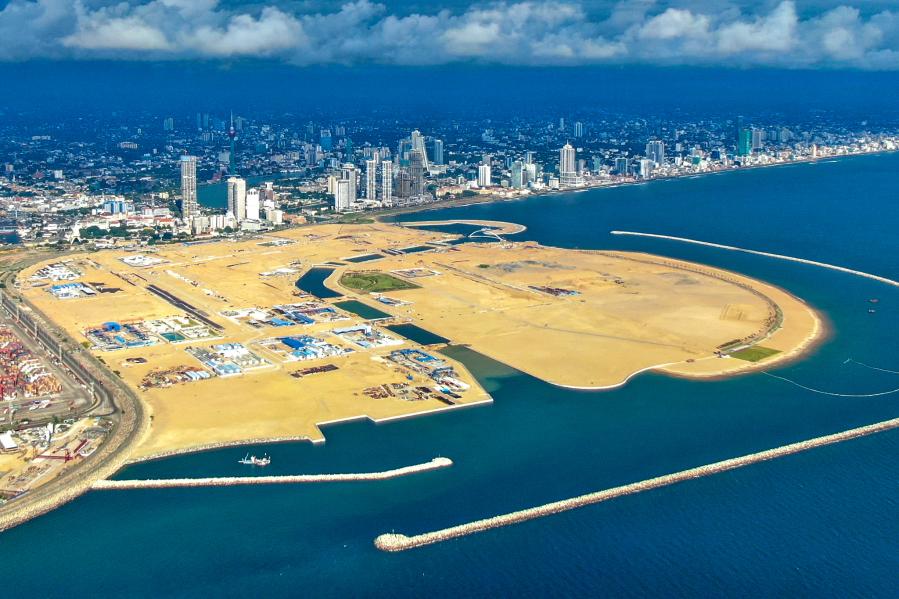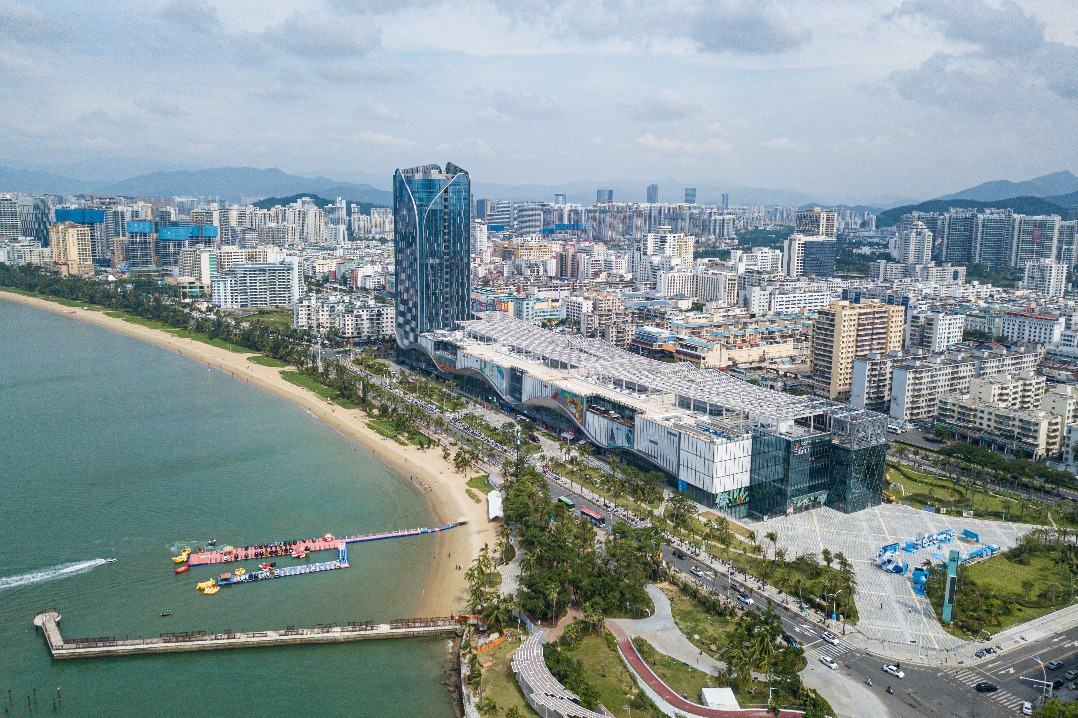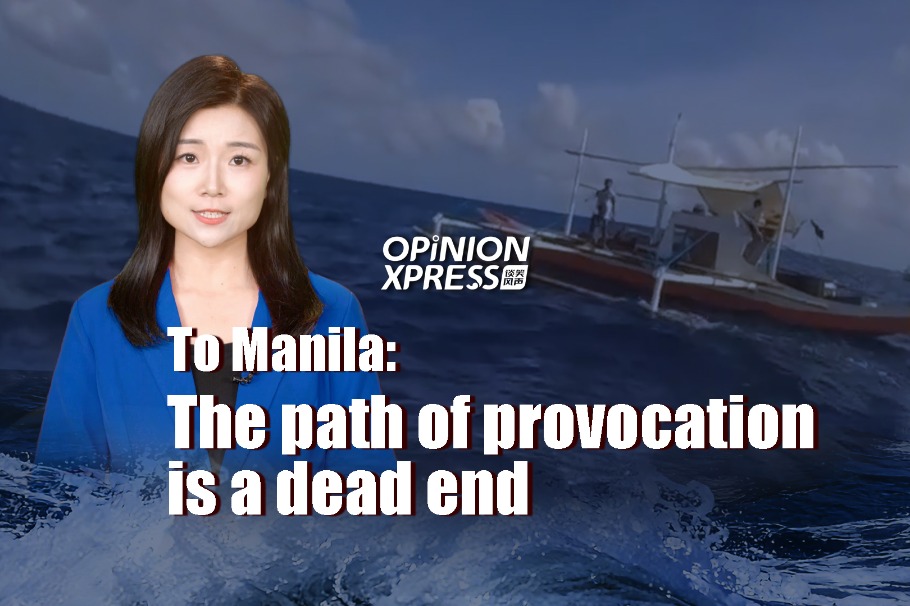Sri Lankan 'debt trap' a creation of the West


Despite some US and Indian media outlets' attempts to hype up the so-called Sri Lankan debt crisis, blaming China for it, the fact remains that their claims are untenable, fabricated by the US-led West and India to mislead global public opinion and defame China, especially demonize the China-proposed Belt and Road Initiative.
True, Sri Lanka has a relatively high debt, but it's not facing a debt crisis. Sri Lanka's foreign debt of $35 billion accounts for about 75 percent of its GDP, while that of many Western countries exceeds 100 percent of their GDP. Also, Sri Lanka's foreign debt repayment is expected to peak this year. Perhaps that's why some media outlets have been hyping up the Sri Lankan "debt crisis".
The foreign debt repayment problem Sri Lanka faces is more due to its excessive borrowing over the years and improper debt structure arrangement. In addition, the terrorist attacks in 2019 and the COVID-19 pandemic outbreak in 2020 increased the country's trade deficit and reduced its tourism revenue, further aggravating its foreign exchange shortage. Since Sri Lanka needs to repay 60 percent of the debt in US dollars, the shrinking foreign exchange reserves (down to $1.6 billion) has increased its debt repayment pressure.
This means Sri Lanka is facing a shortage of foreign exchange, not a debt crisis.
When State Councilor and Foreign Minister Wang Yi visited the island country recently, Sri Lankan President Gotabaya Rajapaksa said he hoped China would help the country revive its economy and ease its difficulties. But the West twisted the statement to claim China is the cause of Sri Lanka's debt problem.
In fact, China has been helping Sri Lanka to boost its economic and social development, and will continue to do so. But the United States and India are using Sri Lanka's shortage of foreign exchange to concoct horror stories about its debt. Standard& Poor's recently lowered Sri Lanka's credit rating from CCC+ to CCC, claiming that Sri Lanka risks defaulting on sovereign credit, which in turn prompted the media to spread the so-called debt crisis story.
Besides, Western economies, not China and its Belt and Road Initiative, are the main creditors of Sri Lanka, as 54 percent of the country's external loans came from the international capital market. Sri Lanka's debt to China, about $3.38 billion in loans, accounts for about 10 percent of the country's total foreign debt in US dollars. China is Sri Lanka's fourth-largest creditor-after international financial institutions, the Asian Development Bank and Japan.
Claiming China's loan terms are "opaque", the Western media say China is leading Sri Lanka into a "debt trap". Before accusing China of practicing "opaque" loan policies, developed countries should make their own loan accounts public, so the international community can see how and for what purposes their aid and loans to developing countries are being used.
The debt problems of many developing countries, including Sri Lanka, can be attributed mainly to the West-dominated financial markets and local elites.
The West and India, unable to accept the reality of a rising China and its growing global influence, have fabricated the "debt trap theory", and are slandering the Belt and Road Initiative and trying to soil China's international image, so the US-led West can continue exploiting developing countries, and the US can maintain its global financial monopoly.
The College of William and Mary in the US released a report in October 2021, saying China has given huge high-interest loans to low- and middle-income countries under the Belt and Road framework, with 42 countries having public debt exposure to China exceeding 10 percent of their GDP-and being unaware of the "hidden debt" problem they face.
Many such reports, disguised as "academic research", have been (and are being) prepared to spread lies against China. And as soon as such reports are issued, some Western media outlets immediately present them as new "evidence" to question the Belt and Road Initiative.
No developing country has been caught in a "debt trap" by joining the Belt and Road Initiative. The "hidden debt" rhetoric is even more untenable, reflecting the usual tricks of the US-led West: that evidence is not important, what important is charging someone with a crime.
The Belt and Road Initiative is an opportunity, rather than a trap, for countries. Developing countries need to take loans from foreign sources to boost their development, by building infrastructure, improving the investment environment, and creating jobs and such loans are good debt, because they can help those countries achieve sustainable development.
Many railways, highways, ports, power stations and other projects built under this framework have helped people in many countries to increase their incomes. According to a World Bank report, the joint construction of the Belt and Road is likely to lift about 7.6 million people out of extreme poverty and 32 million people out of moderate poverty in different countries by 2030. It means the Belt and Road Initiative conforms to the historical trend of solidarity, cooperation, and common development.
It is hypocritical of Western countries, which have controlled the economic lifeline of developing countries since the Industrial Revolution and pushed them into poverty, to claim that they care about the debt problem of developing countries. Their aim is not to safeguard the interests of developing countries, but to ensure China's influence does not spread, because if China were to have its rightful say in global affairs, no country would have to listen to the West's diktats and suffer exploitation.
Instead of playing tricks and spreading rumors against China, the US-led West and India are welcome to compete with China in good faith in the fields of trade and investment, because if Sri Lanka is indeed in a "debt crisis", the US-led West is to blame for that.
The author is vice-president of the China Institutes of Contemporary International Relations.
The views don't necessarily reflect those of China Daily.
If you have a specific expertise and would like to contribute to China Daily, please contact us at opinion@chinadaily.com.cn, and comment@chinadaily.com.cn.


































